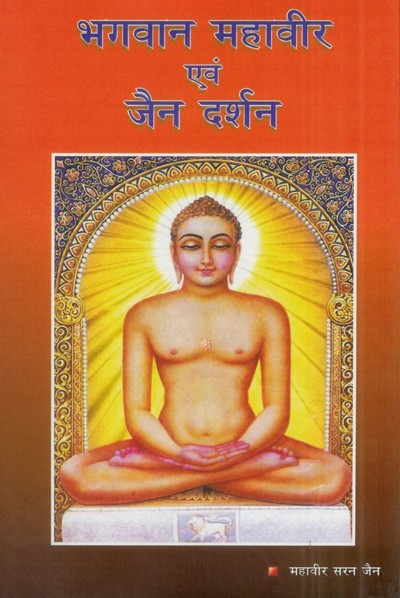According to Ācārya Umāsvamī, the path to liberation or emancipation is:
“Right perception, right knowledge and right conduct.”सम्यग्दर्शन ज्ञान चरित्राणि मोक्ष मार्गः ।।
Samyagdarśanjñāna cāritrāṇi moksha mārgaḥ...
(Tattvārth Sūtra: 1/1)
At the beginning, the accomplishment starts with the sequence of samyagdarśan (सम्यग्दर्शन), samyag jñāna (सम्यग्ज्ञान) and samyag cāritra (सम्यक् चारित्र). In this order, the meaning of samyagdarśan is right faith that is faith in the teachings of Jina or teachings propounded in Jain texts as per Jain religious belief and the meaning of samyagdarśan is correct view of reality or perception as per Jain philosophy. In the later stage, the order becomes as samyag jñāna (सम्यग्ज्ञान), samyagdarśan (सम्यग्दर्शन) and samyag cāritra (सम्यक् चारित्र). In the order of samyag jñāna (सम्यग्ज्ञान), samyagdarśan (सम्यग्दर्शन) and samyag cāritra (सम्यक् चारित्र), the meaning of samyagdarśan is not referred to as right faith in the teachings of Jina or teachings propounded in Jain texts but is true spiritual insight that is insight of one’s consciousness. In fact, samyagdarśan (सम्यग्दर्शन) means right-perception and samyag jñāna (सम्यग्ज्ञान) means right-knowledge or understanding.
In fact, perception or samyagdarśan (सम्यग्दर्शन) and understanding or samyag jñāna (सम्यग्ज्ञान) means to apprehend things gradually one after the other. As we have seen earlier, there are stages of spiritual evolution.: Fourteen stages of evolution, called “guṇasthāna”. Before reaching at the thirteenth stage of spiritual evolution, a shramaṇa (श्रमण) or monk apprehend things gradually one after the other. After reaching at the thirteenth stage of spiritual evolution, shramaṇa (श्रमण) or monks become “kevalī” and in that case the two faculties are co-extensive with the complete reality.
Both the orders are mentioned in Jain scriptures. In ‘Ṣaṭkhandāgama’ the outer tendency of the consciousness is named as knowledge and inner tendency of the consciousness is named as true spiritual insight.
(Dr. Hira Lal Jain: Ṣaṭkhandāgama kī shāstriya bhūmikā, P. 442, Edited by Dr. Dharma Chand Jain, Prachya Sharman Bharti, Mujaffar Nagar (2000))
Both the orders are described in ‘Uttarādhyayana Sūtra’ also.
“Samyagdarśan (सम्यग्दर्शन), samyag jñāna (सम्यग्ज्ञान) and samyag cāritra (सम्यक् चारित्र), and austerities; being who follow this road, will obtain a state of utmost bliss.”
(The Uttarādhyayana Sūtra, 28/3)“By conquering love, hate, and wrong belief he exerts himself for samyag jñāna (सम्यग्ज्ञान), samyagdarśan (सम्यग्दर्शन), and samyag cāritra (सम्यक् चारित्र), then he will cut off the fetters of the eightfold Karman - - -.”
(The Uttarādhyayana Sūtra, 29/71)
 Dr. Mahavir Saran Jain
Dr. Mahavir Saran Jain
